Spotlight on M. Scott Brauer
Jan 7, 2016
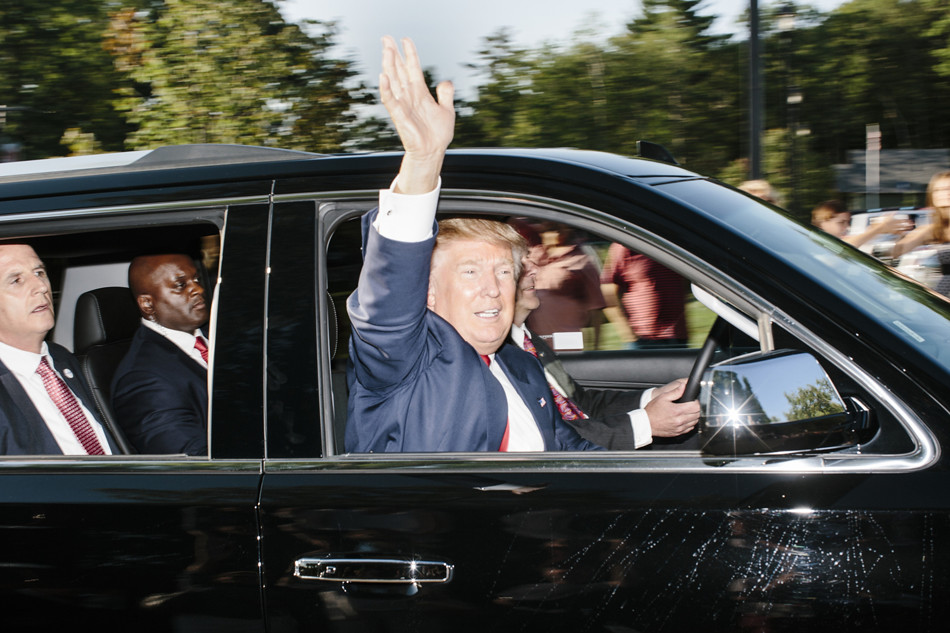
TID:
Thanks for being open to this, Scott! When I saw your body of work come across APhotoADay, I was immediately struck by the uniqueness of these. Can you tell us some of the backstory of why you chose this style? Here's a link to the project for our viewers:
SCOTT:
I chose this style for a few reasons, practical and conceptual.
I knew I wanted to photograph the New Hampshire primary. I’d done it a little once before, in 2012, and my work didn’t go anywhere. Had a couple of pick-ups from magazines, BagNewsNotes did a couple of posts, but that was it. My mistake the previous time was trying to compete with the wire services. I’ll never be faster than them and they’ve already got people doing decent natural-light work. And I’d been feeling like I’d been in a plateau with my work for a few years, using the same approach for most assignments and personal projects.
I’d broken my arm badly in December 2014, and July 2015, when I started on this project, was the first I was really able to do documentary work. That’d given me a lot of time to think about my process and what I might want to change about it. Politics is tough to shoot because it’s so controlled, especially later in the primary process when the crowds are bigger and the Secret Service is involved. I realized there wasn’t much I could change about access (especially working without the backing of any publication) or the moments that would happen when I was nearby with a camera, but I did think I could do something about the lighting. I do a lot of lit portraiture, but I’ve never used direct, on-camera lighting, especially not in a documentary setting, so I thought that’d be something fun to experiment with. All of that was before shooting a single frame. I never even have a flash with me when I’m out on a normal documentary shoot.
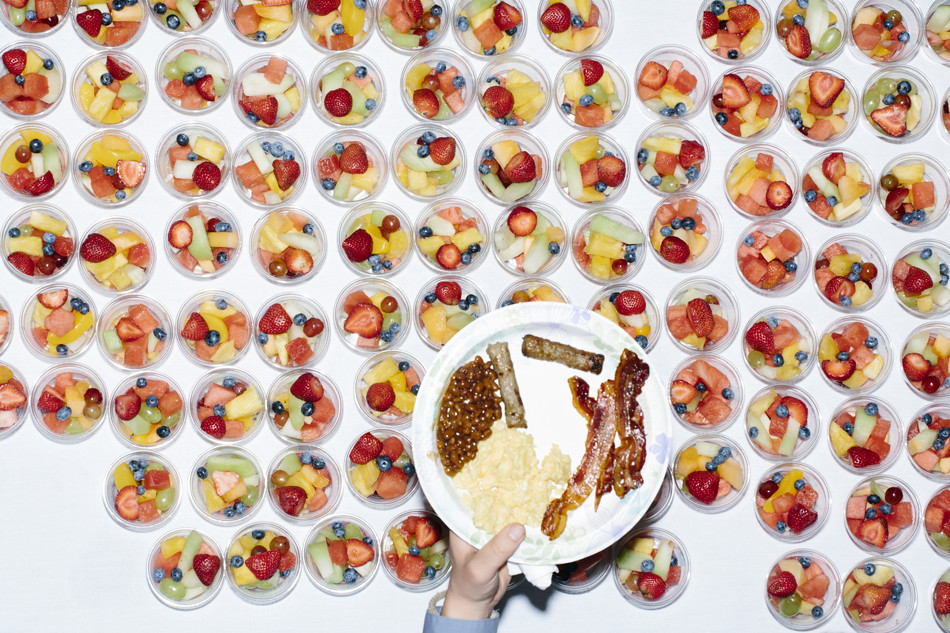
On the practical side of things, I knew that the campaign events have a wide variety of lighting situations. Some would be outside, some inside with nothing but the venue’s lighting, and some would have highly-produced stages with beautiful lighting on the candidate. I knew I wanted a consistent look across the entire body of work. I also started thinking about what bothers me about a lot of political photography...why I find so much of it uninteresting. When it comes down to it, a campaign stop is a press release. The candidates and their teams present the campaign exactly how they want it to be seen on TV and in the papers. There’s usually an American flag backdrop, the crowd visible behind or next to the candidate is usually pretty diverse or filled with veterans, the lighting makes the candidates look like a movie star, etc.
I’ve always liked the NPPA’s code of ethics, especially the bit about resisting staged photo opportunities. But that bit always seems to get ignored in most political campaign coverage. Of course, the campaigns don’t make it easy; they try to get the press to stand in one spot at a certain time, etc., but there’s always a way around that. But when you look in the papers, you see shot after shot of candidates at podiums with an American flag background and nice light. I wanted to subvert that by overpowering any lighting provided by the campaigns and by always looking for things to shoot outside of what is presented to the TV cameras.
All of this really coalesced on the very first day I took pictures in New Hampshire. There were two events scheduled, a Carly Fiorina stop at some factory cafeteria, and a Bobby Jindal stop at a restaurant. I went to the Fiorina one first and the scene was awful. I was late but she was even later. Bad lighting, somebody really firmly telling me exactly where I needed to stand, etc. I waited about 10 minutes and then decided to skip out. She hadn’t shown up and, to be honest, I didn’t exactly know who she was. I’ve got a bad habit of psyching myself out of taking pictures if I don’t like the scene when I show up.
I mean, that never happens on an assignment; I can always summon up the gumption to start taking pictures on an assignment, and I’ll figure out a way to do a good job. But when I’m on a personal project and something doesn’t feel right, sometimes I’ll just quit--sometimes I won’t take a single picture!--and come back when I feel more interested in what I’m supposed to be shooting. I took a couple pictures of some signs and then I left to drive to the Jindal event. I’d heard of Jindal before and figured an eventat a restaurant might give me a little more to play with.
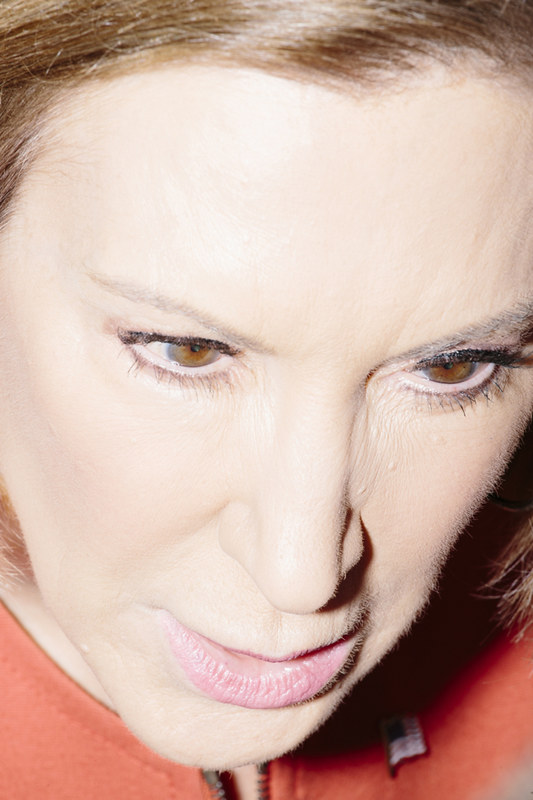
I got to the Jindal event and it was awful, too. Large room with just a few people in it. Worse lighting. Ugly potted plants along the edge of the room (here’s the potted plant that really set off the idea: http://mscottbrauer.photoshelter.com/gallery-image/Bobby-Jindal-Believe-...). It looked like a bad wedding reception. And that’s when the idea hit me that the New Hampshire primary process was the worst party I’d ever been to. Bad music, the guest of honor is always late, cold food, etc. It was one of those ideas that I couldn’t shake. Jindal hadn’t arrived yet and my mind was racing about how to communicate that “bad party” idea in my pictures. I’d known I wanted to play with lighting, as I mentioned above, and I was a big fan of Chris Morris’ off-camera strobe work during the 2012 primary.
I didn’t have money for an assistant and my broken arm was still bad enough that I couldn’t handle much weight, so I had to have the light on my camera. At that point, I still couldn’t even support a camera with my right arm, so I was holding it entirely with my left hand. Earlier in the year, I’d had to assignments with my right arm in a sling, using a remote shutter release with my right hand in the sling. When I started this project, I could at least get my finger to a shutter button close to my eye, but I still couldn’t bend my arm all the way...I had to strain my neck forward like a turtle stretching out of its shell in order to look through the viewfinder. I did a few left-handed shutter presses during the first few shoots on the project, too.
The idea had also got me thinking about bad photography of bad parties, and my memory immediately went to point-and-shoot pictures with shadow behind people and objects from on-camera flash. So I figured I’d see if I could get a similar effect with my professional equipment. I started shooting the crowd a bit before Jindal arrived and found a look I liked. For the first few shoots, including the Jindal event, I tried some natural light and bounce-flash approaches, just to see if it’d yield anything I liked, but I pretty quickly honed in on the direct, camera-mounted flash style that you see in all of the pictures.
Sometimes I don’t look at my personal work for weeks, months, or sometimes years after I’ve shot it, but I looked at this stuff and the work from some of the first campaign events I shot as soon as I’d get home to make sure I was getting the look I wanted. And, importantly, the pictures were getting close to some of the concepts I’d been thinking about. And the pictures looked consistent between different events. It felt like a body of work.
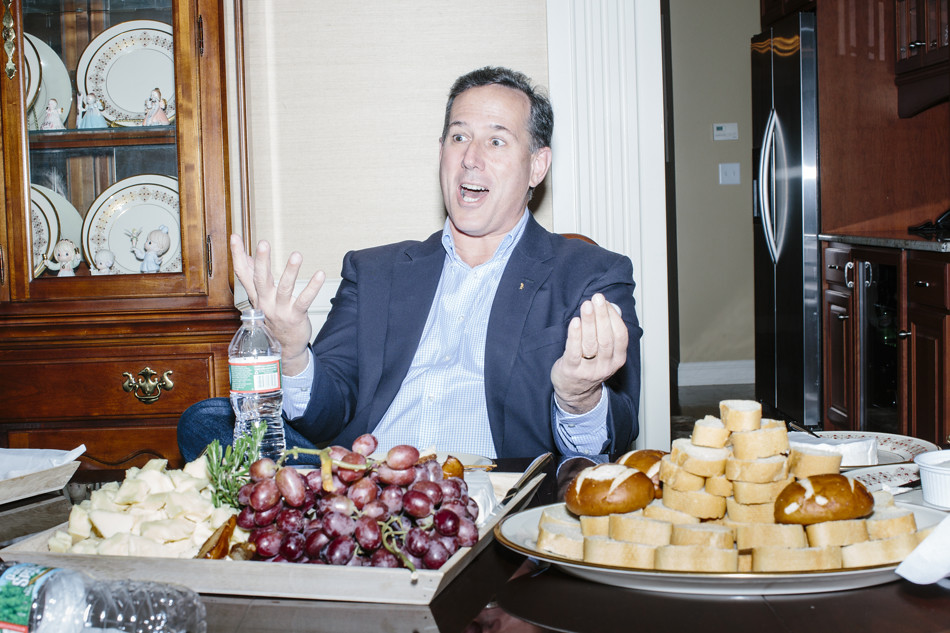
TID:
I really love it when photographers have a consistent style on an idea, in order to present a more cohesive body. Can you talk a little more about the equipment you've used?
SCOTT:
I’ve never been interested in gear, but I knew I needed a more powerful flash so I got one that uses a bare bulb after the first couple of events I covered. That let me shoot outside much more easily. I also very quickly settled on using longer lenses. I sometimes carry a 24mm with me, and I tried using it a little at the beginning, but, man, is that a lens that’s only useful when you really need it. I hate the way it looks and unless I’m shooting in a really small lab or something, I’ll never go lower than 35.
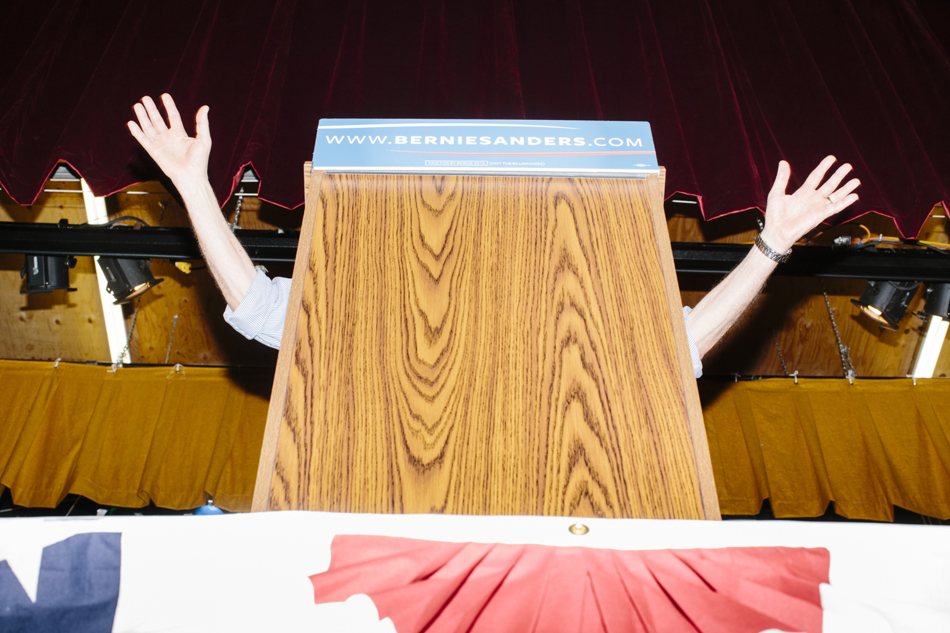
And in recent years I’ve really gotten comfortable with a 50 and grown to like it more than the 35. Most of this project is either with a 50 or a 70-200. But I’ve consciously tried to use the lenses in situations opposite of what I’d normally do. Like I said above, I wanted to break out of a plateau I’d been feeling in my work, so with this project I’ve been trying to do the opposite of my natural instincts in photographing a situation. I’ll go into really tight situations like the scrum after a campaign speech when media is trying to get close and supporters are trying to get handshakes, and I’ll use the 70-200, for instance. Before this project, I could probably count the number of times I’d used that lens on two hands, but now I use it all the time, though rarely in situations when I can’t get closer. That’s how I get the series of close-ups of candidate faces, sometimes in a little bit of shadow cause by other people’s heads blocking my flash when I turn the camera vertically (this for instance: http://mscottbrauer.photoshelter.com/gallery-image/Ted-Cruz-Campaign-Hea...) or some of the weird details.
Since starting the project, I’ve looked at a lot of political photography, especially vintage press work. Early on I started to realize that the pictures, in addition to looking like bad house party pictures, had a feel of being from a different era. A lot of that old work was done with camera-mounted flash bulbs, and I really like the way that my approach now harkens back to the history of political press photography. My work’s in color, and I’m aggressively trying to shoot things in an odd way, but I like to think of the work as being in the same realm as that amazing old Flint Journal picture of Adlai Stevenson with a hole worn through the sole of his shoe: https://iconicphotos.wordpress.com/2010/03/09/adlai-stevenson-with-the-h... I mean, there’s no way I can compare my work to that picture, but that’s the sort of thing I’m trying to draw out of the incredibly over-produced modern political pageant.
There’s one thing I’d add. I’ve never really been quick about getting my work out. I let something marinate a bit before showing it to anyone, or at least to the public. After shooting a few of these events, I felt I was on to something, but thought it might be too weird to really go anywhere. I put up a couple posts on tumblr and then posted those on facebook, and I got a really good response. There were aton of people wondering just what the heck I was doing and why the pictures looked so ugly. But there were a few people that really got it, especially when I put a little explanatory text about my ideas behind shooting in this style. I had a lot of conversations with photographers in those early days of the project...some took a lot of convincing but eventually came around, and some, on the other hand, were really pushing me to shoot even more weirdly and abstractly. That early encouragement was really important in building my own interest to continue the project.
TID:
How has this style changed how you see politics?
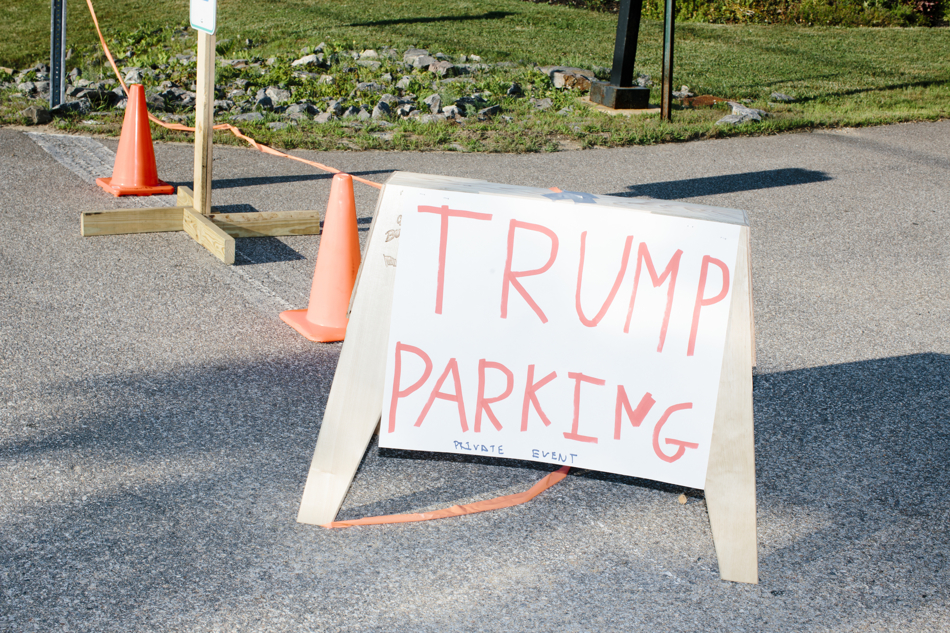
SCOTT:
I think I had a pretty cynical view of politics to begin with. That’s what made me start shooting this way from the get-go. Doing this has only confirmed my feelings. I’m trying to show how inauthentic these repetitive appeals for authenticity are. And I think I’m achieving that by photographing so many of these events.
I shot only Republicans for the first month of the project; no Democrats had campaign stops scheduled when I could go to them. I was worried at first that my work was going to be viewed as some sort of hit piece against the Republican party. I have my own politics that I don’t want to get into here, but my interest was never to critique individual candidates or parties. After shooting a couple of Sanders and Clinton events, I knew I could cover both parties equally. The crowds might look a little different, but politicking at this level is the same regardless of party. There are American flags and lapel pins and bad music playing before the events on both sides of the aisle. My interest is in critiquing the process of a political campaign. Just like most politicians have a way to make their words say everything and nothing at the same time, so to do the visuals and “optics” they present.
One thing that has worried me a bit after shooting this for so long is that I’ve gotten to know people on the campaigns. I found myself thinking, “Well, they worked hard to get that sign made. Maybe I shouldn’t photograph how sloppily it’s hung,” or whatever. I thought about stories about how embedded reporters wouldn’t write certain things after being embedded with a military unit for a while, how they would begin to identify with the people they were trying to observe. I don’t think it’s affected my approach at all, but for a little while I thought I was losing my edge.
And I don’t want to say that I’m actively trying to make anyone look bad. My work isn’t flattering to the people in the pictures, but I think it is honest. A few times I have found myself pointing the camera at some person or thing that really looks bad, but then I don’t take the picture because I realize that my only interest was in how bad the person or thing looked. Maybe it was just someone having a bad day or something, and that’s not really important to a story about the primary.
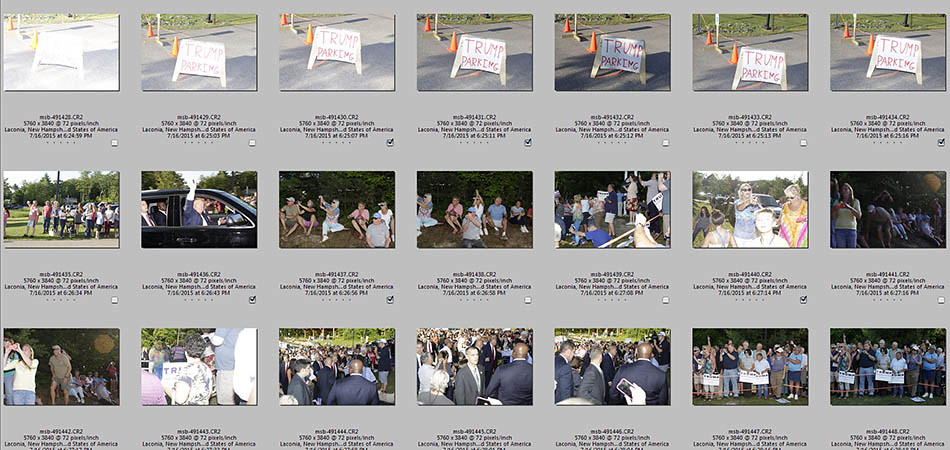
TID:
Now, onto the moment. Can you talk about the minutes leading up to the main frame, and what was going on in your mind at the same time?
SCOTT:
For the picture of Trump in the car, there really isn’t a lot to say. I’d been at a Scott Walker event right before but Walker was late. I left that event, knowing I wanted to get to the Trump event, but I hadn’t realized how bad the drive between the two was. It was about an hour or so of windy, narrow, rural roads across the state. I was late to the Trump event and hadn’t called ahead to get on the list, so wasn’t really sure what to expect. I got there and there was a huge crowd in a tiny room. Somebody gave me the last credential they had, but I didn’t like my position in the room. I walked outside to check out the crowd waiting for Trump. It was a bit of a walk around the building and on the way, I took a couple pictures of the sign aboveand then started walking to the crowd. I probably heard some people shouting and I turned around and there was Trump in the car. I was outside so using full power on the flash, so I only got one frame as he zoomed past. I didn’t have anything to focus on in the empty space where his car would occupy, so I really got pretty lucky with the shot. Then I kept walking up toward the crowd and kind of got swept up in his entourage as he entered the building to give his speech. That helped get me pretty close to the podium for the event and also I was in a good position to follow him back out to the crowd. You can see a wide edit in chronological order here: http://mscottbrauer.photoshelter.com/gallery/Donald-Trump-Rally-at-Weirs...
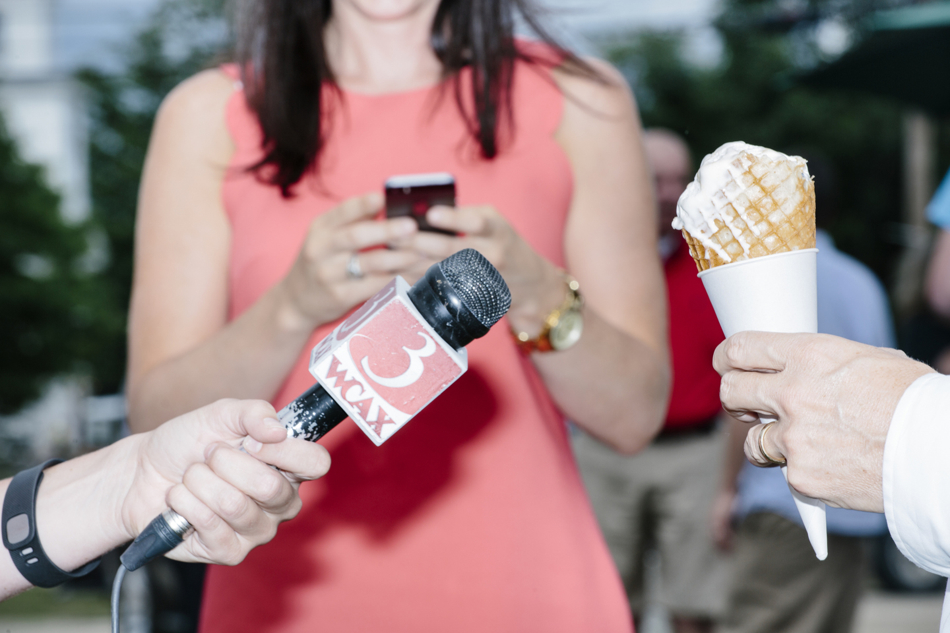
TID:
What have you learn about others from covering politics so extensively?
SCOTT:
I’m not sure I understand the question. I’m just taking pictures for a story and it really hasn’t given me much insight into mankind.
TID:
What have you learn about yourself?
SCOTT:
Again, I’m not sure I really understand the question. It’s just another story I’m working on. I’ve never really been the self-reflecting type.
It does feel like a different level for me, and I’ve gotten a lot more interest from editors and other photographers for this work compared to other projects in the past. The whole project was a gamble, and it worked out. I’ve gambled on other stories and never sold an image, though, so I was prepared for it to go nowhere.
Maybe when I start the next project I’ll have a better answer to this question. Maybe this project will radically change the rest of my work. I just don’t have an answer yet.
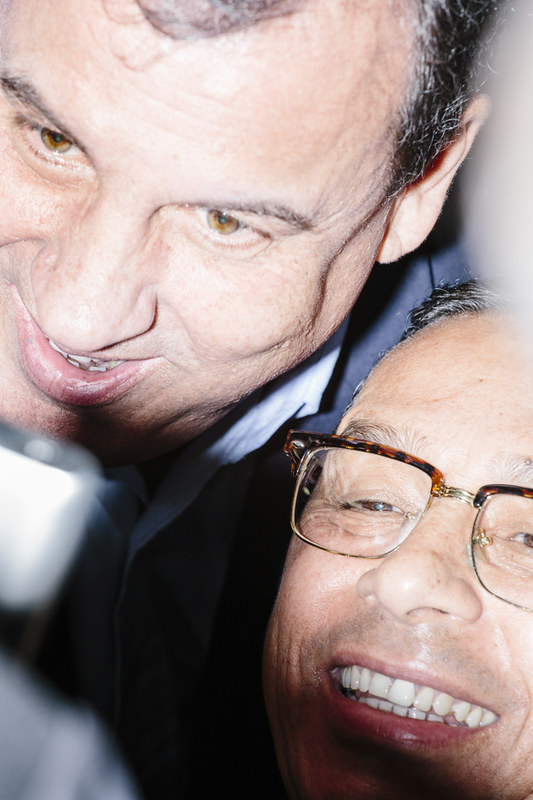
TID:
In conclusion, what advice do you have for photographers who may want to do this type of work?
SCOTT:
I guess it’s the same advice I heard when I told people I wanted to photograph the primary in the first place. I reached out to a couple editors before I’d shot anything saying that I’d be in the area, and they all said to try and do something different. There’s no way to compete against the wires; they’re faster than you and cheaper for publications. You’ve got to find a unique way to tell a unique story. I think I hit on something good, and it really worked out. For the past few months I’ve had publications competing to get the pictures; I’ve never had that happen before.
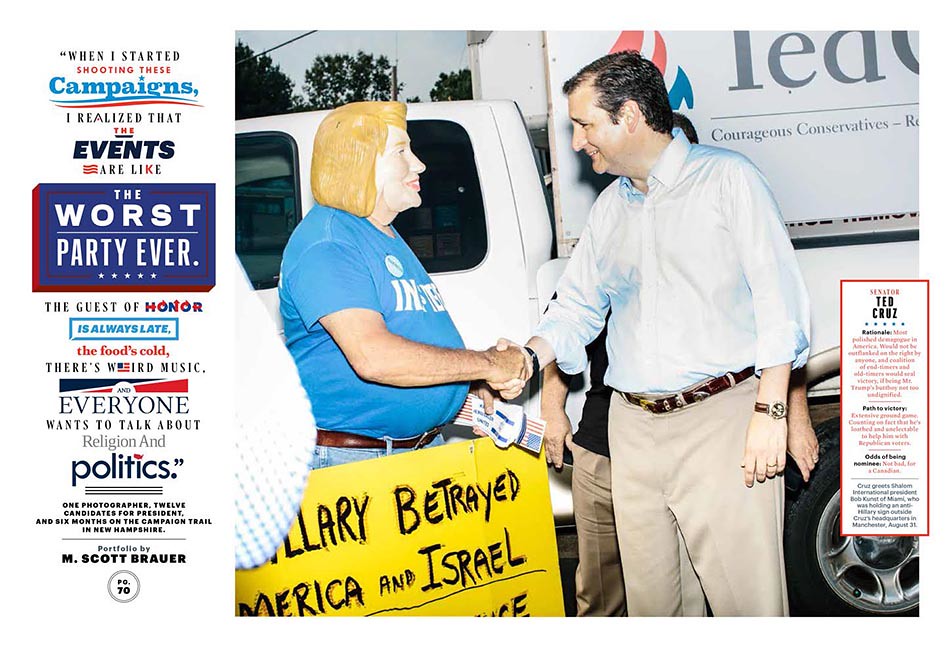
:::BIO:::
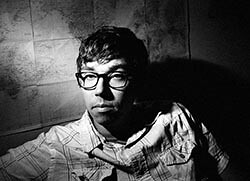
M. Scott Brauer is a photographer based in Boston, Massachusetts. He works for national and international newspapers and magazines. He interned at Black Star and VII in 2005. He worked for daily newspapers in 2006 and 2007: the Northwest Herald in suburban Chicago, and the Flint Journal in Flint, Michigan. He moved to China in 2007, and then returned to the US in 2010, working as a freelancer in both places. He is a co-founder of dvafoto.com, a blog about photojournalism and a contributing writer for Raw View magazine. His work has appeared recently in Time, Esquire, Le Monde's weekend magazine, the Chronicle of Higher Education, the Wall Street Journal, the New York Times, the Globe and Mail, Dagbladet Information, New Scientist, IEEE Spectrum, Foreign Policy, New York's Daily Intelligencer, MIT News, and other publications.
You can see more of his work here: